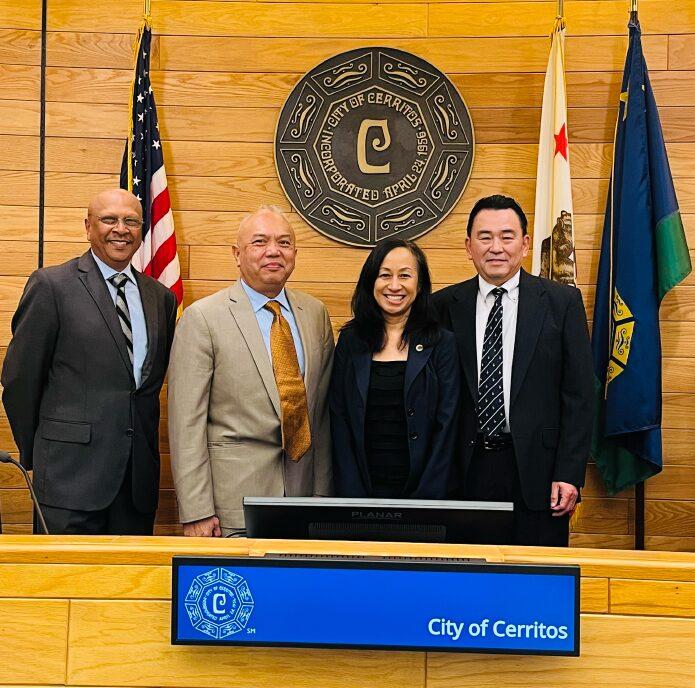 GOING into the holiday week, California is still hitting record COVID-19 numbers, signaling that restrictions could remain in place into the new year.
GOING into the holiday week, California is still hitting record COVID-19 numbers, signaling that restrictions could remain in place into the new year.
Governor Gavin Newsom earlier this week said that the state is inclined to extend the regional stay-at-home order for more than the three-week period. But he did not offer what that extension would look like.
“Based upon all the data, and based upon all these trend lines, it’s very likely that we will extend the stay-at-home order,” Newsom, who is quarantining after another staff member tested positive for COVID-19, said.
This comes as four out the five regions, or 98% of the state, are under the order, which was triggered by the Intensive Care Unit capacities dropping below 15% and has implemented shutdown requirements for most businesses except for retail stores and essential services.
Southern California and the San Joaquin Valley remain at 0% ICU capacity, though they were slated to exit the regional order by December 28 if the ICU levels reached above or equal to 15%. The Bay Area is at 11.4%, with eligibility to exit on January 8 and Greater Sacramento is at 15.6% and can return to the Blueprint for a Safer Economy order by January 1.
“Just because it’s at 0 doesn’t mean there’s no ICU available — it means we’re now in the surge plan,” Newsom said.
Meanwhile, Northern California is the only region not under the order as its availability remains at 28.8%. Statewide, the current ICU capacity is 2.5%.
Under the regional order, gatherings are prohibited, while outdoor dining and indoor activities like hair salons, personal care services, and movie theaters are temporarily shuttered.
The state reported 36,069 new daily cases on Tuesday and 361 new deaths, bringing the totals to 1,964,076 cases and 23,284 fatalities since the beginning of the pandemic.
The 7-day positivity rate is 12.6% and the 14-day positivity rate is 12.3%.
The number of hospitalizations due to confirmed COVID-19 cases in California reached a total of 18,448, while 913 are hospitalized suspected to be infected with the virus. The number of ICU patients reached a total of 3,827 confirmed COVID-19 cases and 128 suspected.
Vaccination campaign
On Friday, December 18, the Food and Drug Administration issued an emergency use authorization for the Moderna vaccine, becoming the second vaccine against COVID-19 to be distributed in the United States.
This comes a week after the Pfizer-BioNTech vaccine was authorized and began to be administered to frontline health care workers across the country, including throughout California.
Newsom said 672,600 Moderna vaccines would allocated for California in the first round this week. Already, 100,000 have arrived in the state as of Monday.
Given that it does not need extreme-cold storage compared to the Pfizer-BioNTech vaccine, the Moderna vaccines are more suitable for distribution in rural and hard-to-reach areas. It is similarly a two-dose vaccine, but the second dose will be administered 28 days after the first, unlike a 21-day gap for the Pfizer-BioNTech one.
Newsom said the federal government deserves credit for the swift arrival of the vaccines.
“This is an extraordinary accomplishment, for this country, for our nation, for our world that these vaccines are even going into people’s arms, that they have arrived,” Newsom said. “I want to compliment everyone who was part of Operation Warp Speed — they deserve credit, the administration deserves credit, the president and vice president deserve credit for working hard over the course of the several months to get these vaccines out and to get them into these states.”
The state is expected to receive a total of 560,625 doses of the Pfizer-BioNTech vaccine, 40% less than what was previously promised by the federal government. The first allocation was 327,600, with 233,025 anticipated in the second round.
In the first week, 70,258 doses were administered across the state.
For now, health care workers who have direct interaction with patients as well as residents in long-term skilled nursing facilities are prioritized in the initial shipments of the vaccines.
Last week, the governor announced the “Vaccinate All 58” campaign to ensurer safe and equitable vaccine access for all 58 counties in the state once more doses are available for mass distribution. Other subgroups of the population, such as teachers, workers in the food industry and vulnerable senior citizens, are being eyed for the next tier of vaccinations in the state.
CA Notify
Newsom also reminded California residents to opt into the state’s CA Notify system, which is supposed to help with contract tracing and alert them of their possible exposure to COVID-19.
Californians can receive notifications informing them if they have been exposed to someone who has tested positive for the virus so they can take immediate actions around quarantine and testing. Californians with iPhones can enable CA Notify in their settings and Android phone users can download the app from the Google Play Store to immediately start receiving exposure alerts on their phones. Use of the technology is completely voluntary, private, and secure.
To date, 7.35 million residents have enabled the notifications.





